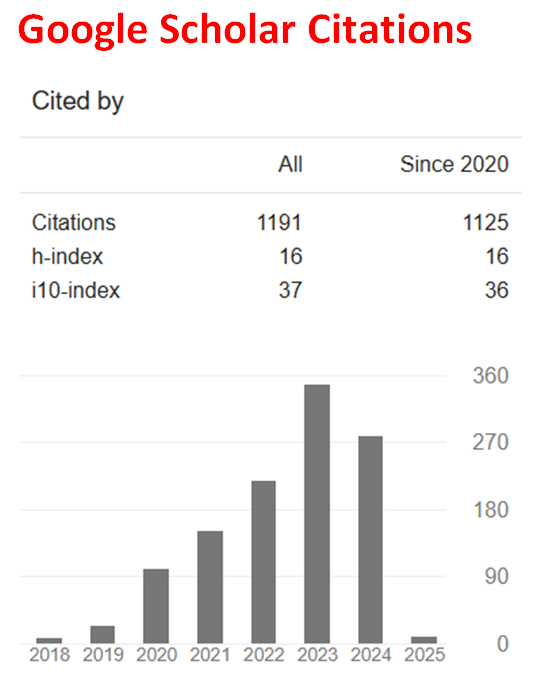An Analysis of the Exchange Rate Volatility in Poland using the GARCH, GJR-GARCH and EGARCH Models
Abstract
This paper employs the symmetric GARCH and the asymmetric GJR-GARCH(1,1) and E-GARCH(1,1) models to explain the dynamics of the PLN/EUR and PLN/USD exchange rates in Poland for the periods of January 2015 to July 2022. The result of our study shows that the USD rate is more susceptible to market fluctuations and events than the EUR rate. Additionally, both rates' volatility persists after a market crisis for a while, with the EUR rate taking longer until volatility subsides. Using the Akaike information criterion and Bayesian information criterion, we find the E-GARCH model to be the best model out of all three models considered.
References
A. Barska, J. Jędrzejczak-Gas and J. Wyrwa, Poland on the path towards sustainable development-A multidimensional comparative analysis of the socio-economic development of Polish regions, Sustainability 14(16) (2022) 10319. https://doi.org/10.3390/su141610319
R. F. Engle, Autoregressive conditional heteroscedacity with estimates of variance of United Kingdom inflation, Journal of Econometrica 50(4) (1982), 987-1008. https://doi.org/10.2307/1912773
D. B. Nelson, Conditional heteroskedasticity in asset returns : A new approach, Econometrica 59(2) (1991) 347-370. https://doi.org/10.2307/2938260
L. Glosten, J. Ravi and R. David, On the relation between the expected value and the volatility of the nominal excess return on stocks, The Journal of Finance 48 (1993) 1779-1801. https://doi.org/10.1111/j.1540-6261.1993.tb05128.x
L. A. Yunusa, Exchange rate volatility and Nigeria crude oil export market, Scientific African 9 (2020). https://doi.org/10.1016/j.sciaf.2020.e00538
Y. Zhang, M. Hyder, B. Zulfiqar Ali, Q. Chong and H. B. Saydaliev, Nexus between oil price volatility and inflation : Mediating nexus from exchange rate, Resources Policy 79 (2022). https://doi.org/10.1016/j.resourpol.2022.102977
Z. Zhou, Z. Fu, Y. Jiang, X. Zeng and L. Lin, Can economic policy uncertainty predict exchange rate volatility? New evidence from the GARCH-MIDAS model, Finance Research Letters 34 (2020). https://doi.org/10.1016/j.frl.2019.08.006
D. Tarakçı, F. Ölmez and D. Durusu-Çiftçi, Exchange rate volatility and export in turkey : Does the nexus vary across the type of commodity?, Central Bank Review 22 (2022). https://doi.org/10.1016/j.cbrev.2022.05.001
L. Sugiharti, M. A. Esquivias and B. Setyorani, The impact of exchange rate volatility on indonesia's top exports to the five main export markets, Heliyon 6 (2022). https://doi.org/10.1016/j.heliyon.2019.e03141
S. Eichler and H. C. Littke, Central bank transparency and the volatility of exchange rates, Journal of International Money and Finance 89 (2018), 23-49. https://doi.org/10.1016/j.jimonfin. 2018.07.006
F. Demir, Exchange rate volatility and employment growth in developing countries : Evidence from Turkey, World Development 38(8) (2010), 1127-1140. https://doi.org/10.1016/j.worlddev.2009.12.019
M. Ulm and J. Hambuckers, Do interest rate differentials drive the volatility of exchange rates? Evidence from an extended stochastic volatility model, Journal of Empirical Finance 65 (2021) (2022), 125-148. https://doi.org/10.1016/j.jempfin.2021.12.004
J. Fidrmuc and R. Horváth, Volatility of exchange rates in selected new EU members : Evidence from daily data, Economic Systems 32(1) (2008), 103-118. https://doi.org/10.1016/j.ecosys.2007.09.004
M. Bahmani-Oskooee and A. C. Arize, The effect of exchange rate volatility on U.S. bilateral trade with Africa : A symmetric and asymmetric analysis, Economic Systems 46(1) (2022), 100879. https://doi.org/10.1016/j.ecosys.2021.100879
S. Doğan, M. Ustaoğlu and S. Demez, Relationship between real oil price and real exchange rate : The case of Turkey, Procedia - Social and Behavioral Sciences 58 (2012), 1293-1300. https://doi.org/10.1016/j.sbspro.2012.09.1112
K. O. Emenike, Comparative analysis of bureaux de change and official exchange rates volatility in Nigeria, Intellectual Economics 10(1) (2016) 28-37. https://doi.org/10.1016/j.intele.2016.04.001
R. Asif and M. Frömmel, Exchange rate exposure for exporting and domestic firms in Central and Eastern Europe, Emerging Markets Review 51 (100863) (2022). https://doi.org/10.1016/j.ememar.2021.100863
A. Corelli, Market Risk Analysis, Vol. 2, John Wiley & Sons Ltd., 2008.

This work is licensed under a Creative Commons Attribution 4.0 International License.
.jpg)

